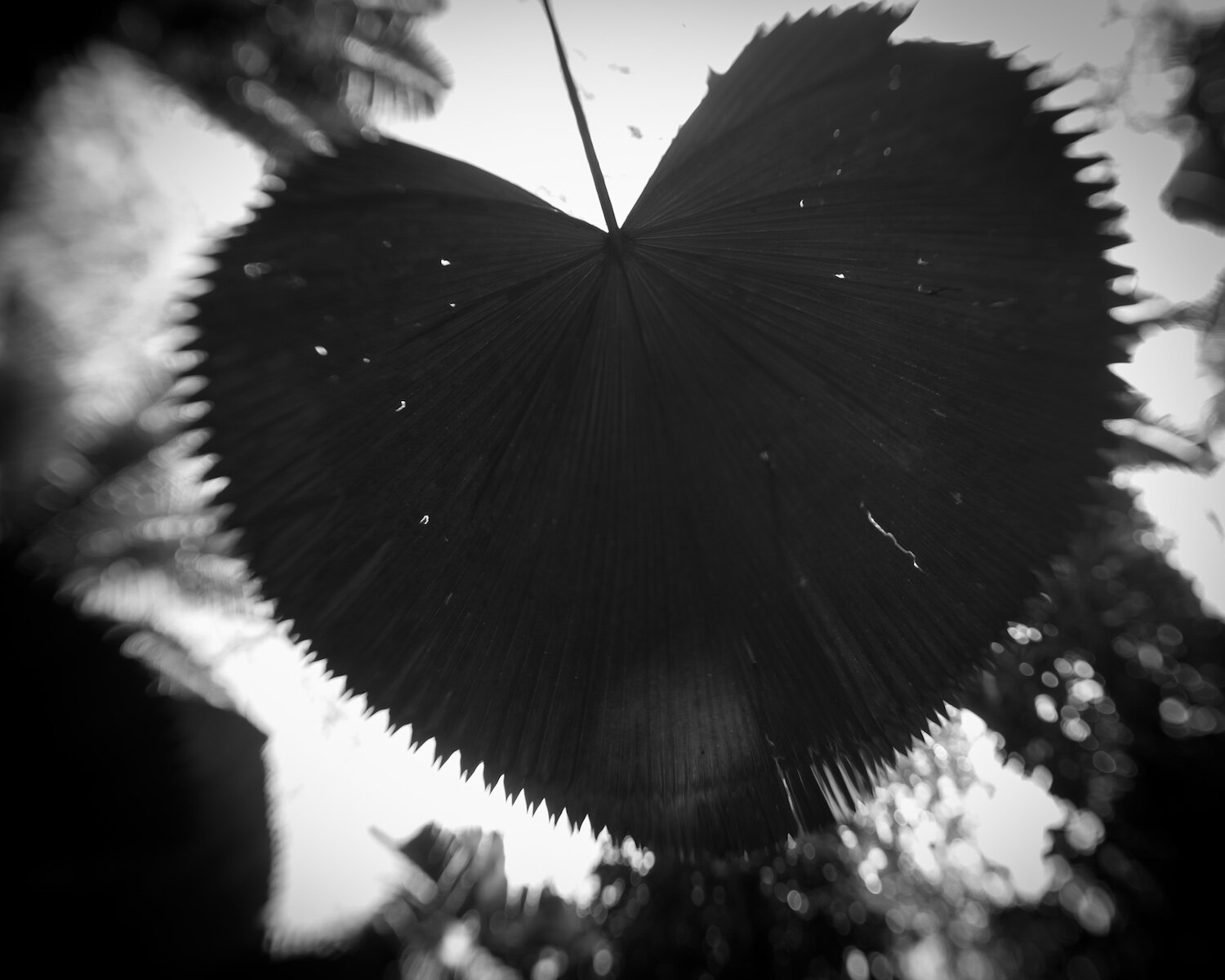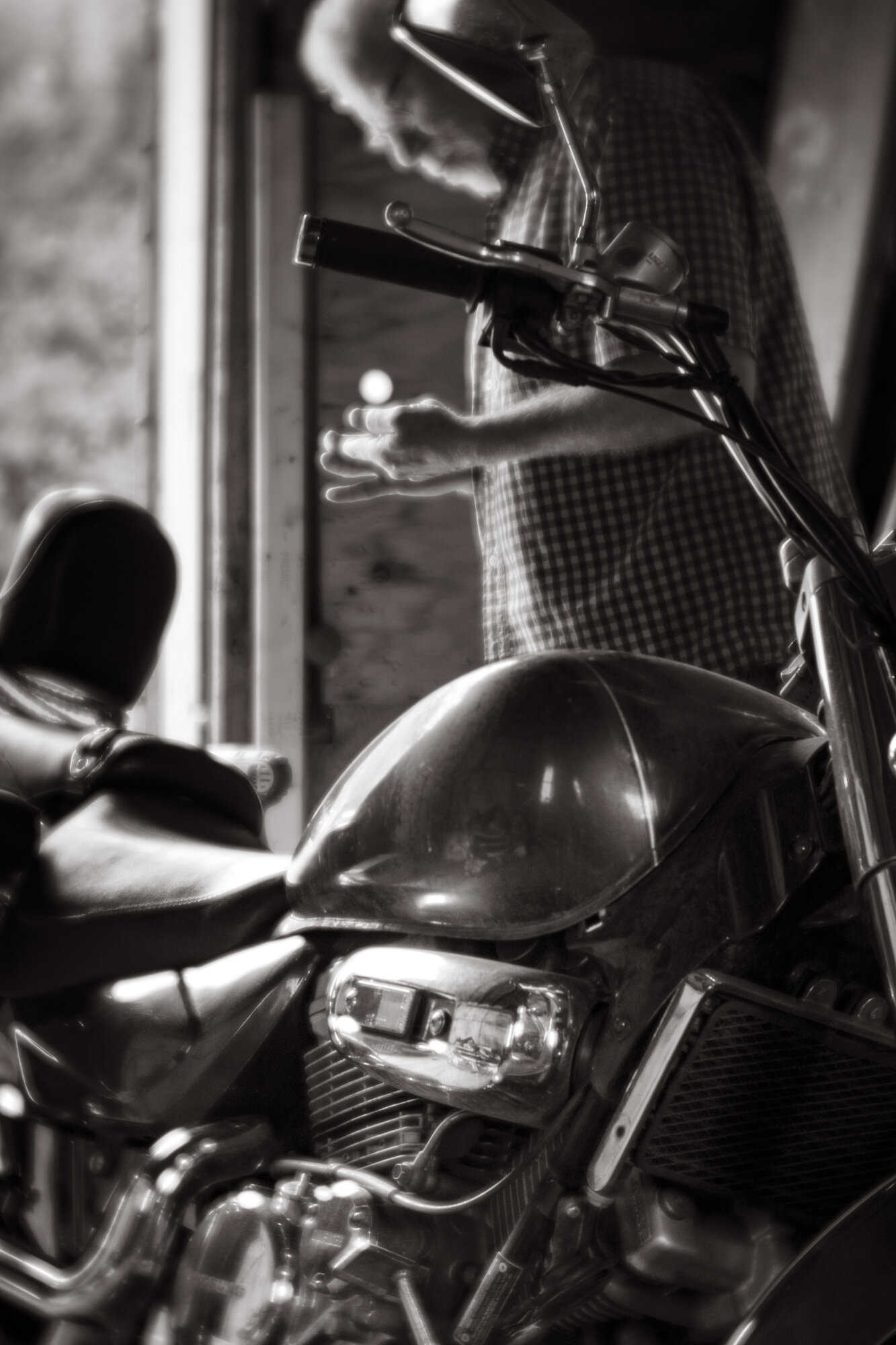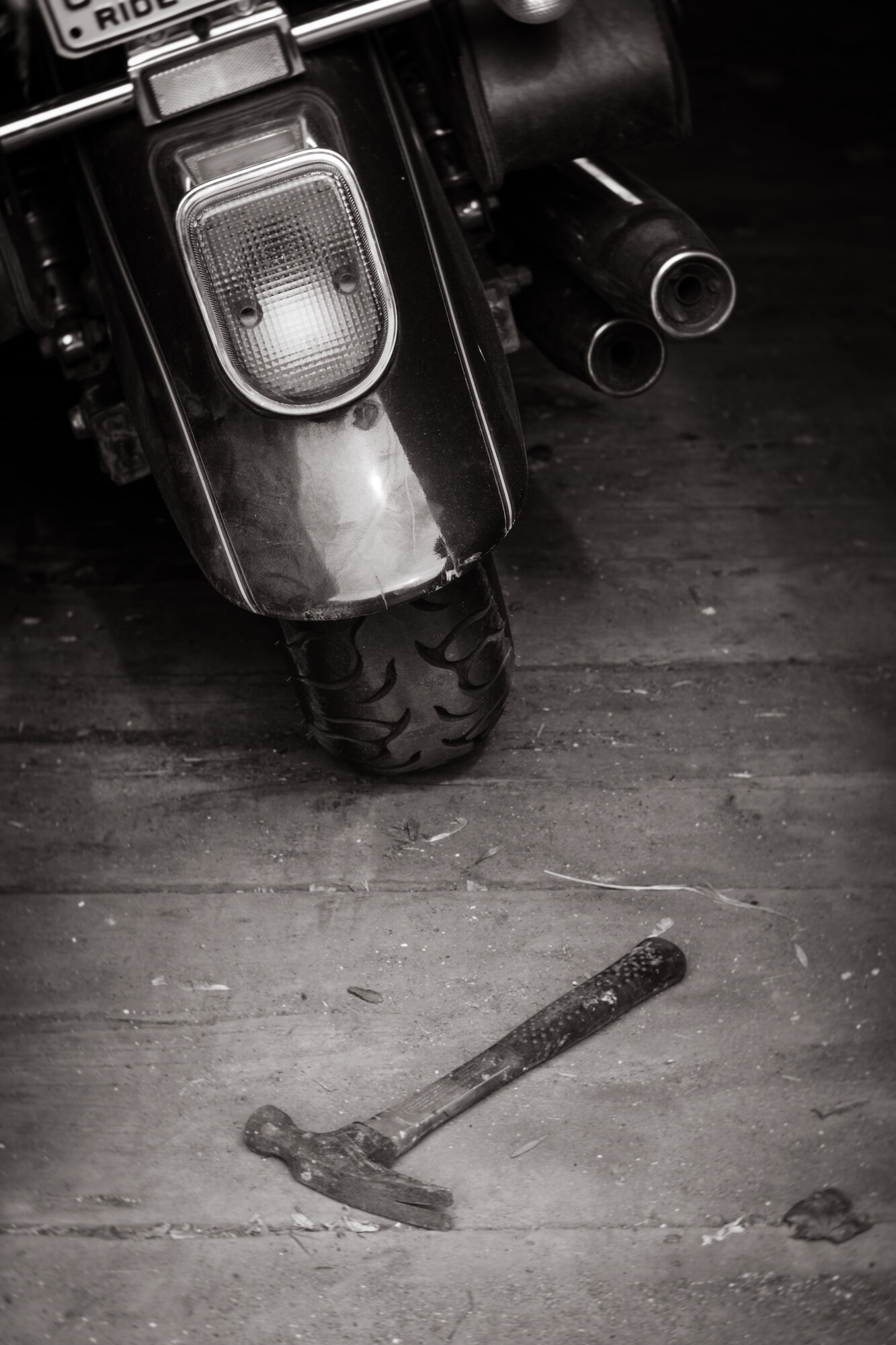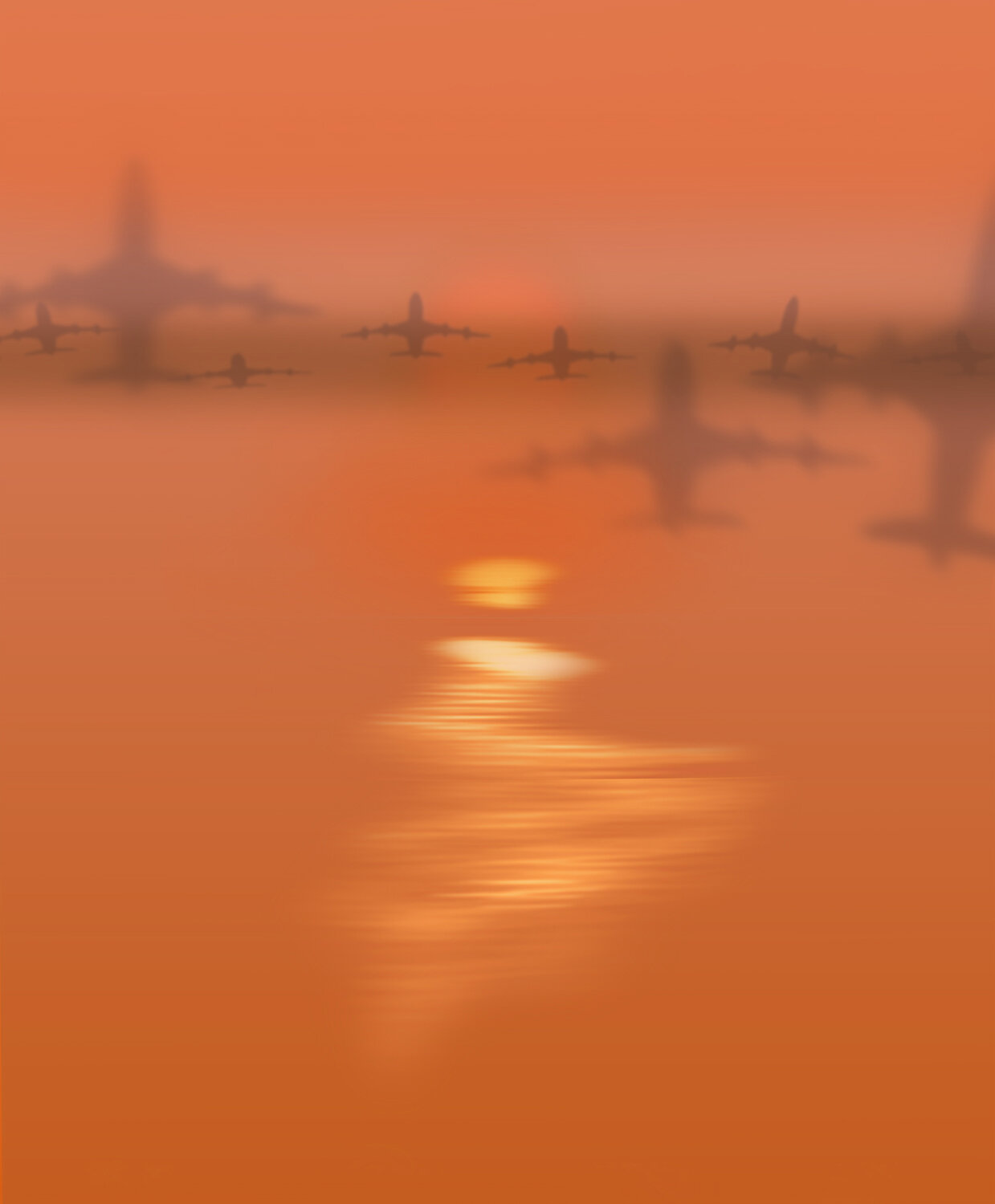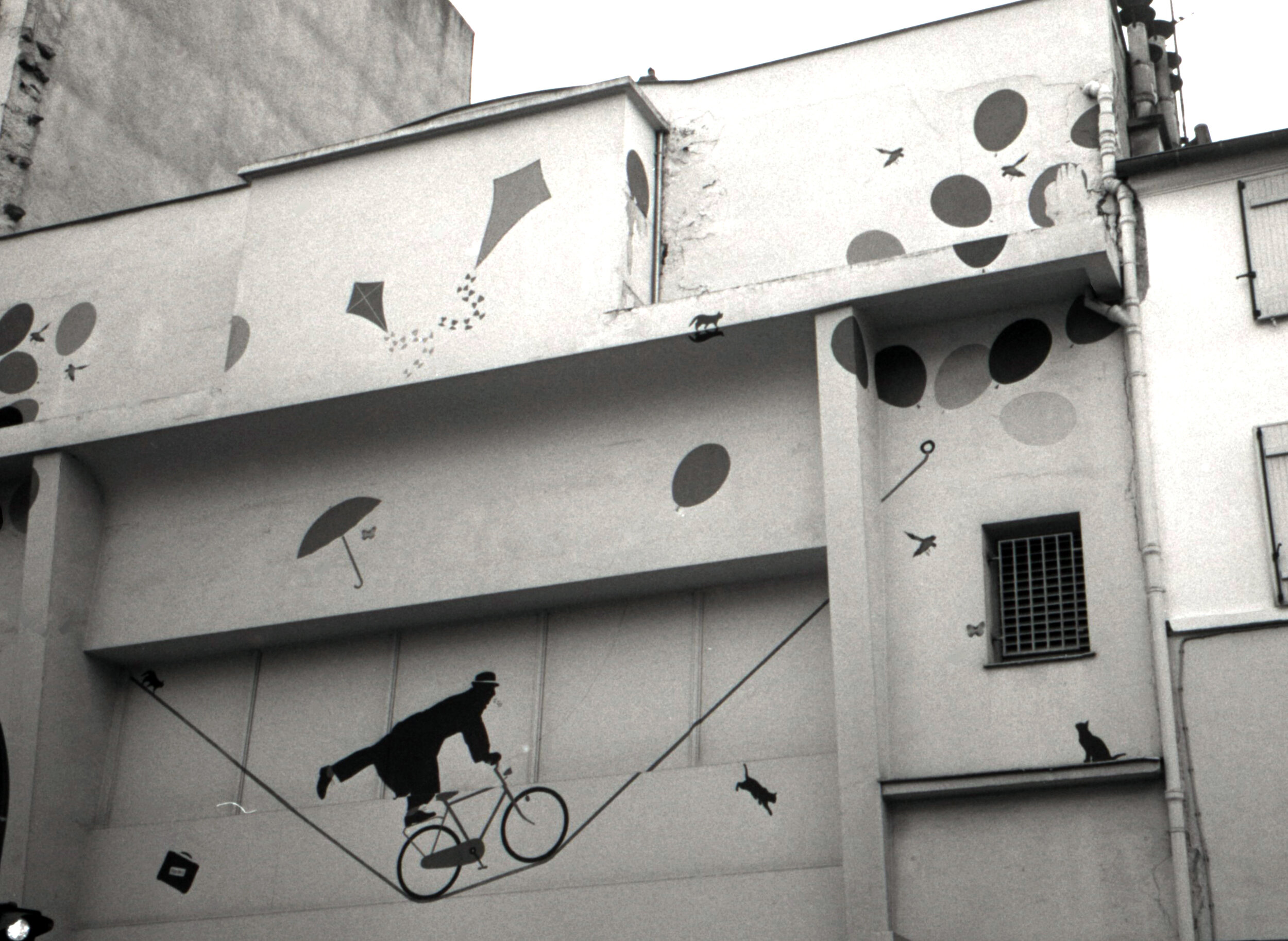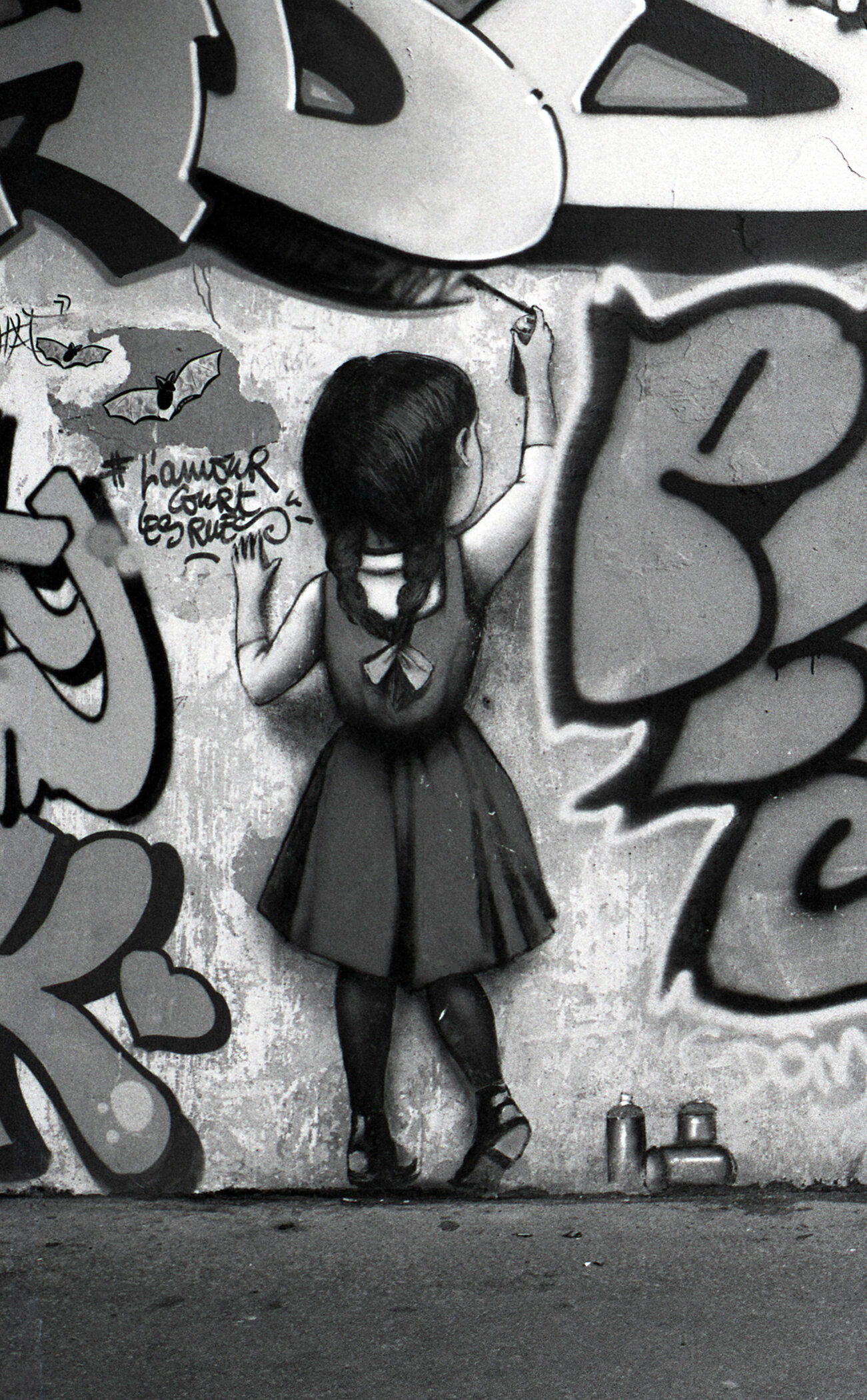The Antidote gets Potent!
Seeking Memories in the Land with Elizabeth Greenberg
by Deb Dawson
Elizabeth Greenberg, Hawaii, 2019, Inkjet print, 20 x 24 inches
Have you ever walked through a forest or neighborhood for the first time and feel that you’ve been there before? Or wonder why the late afternoon light falling on the bark of a particular tree reaches out to you? As photographers, we are ever looking, searching for connection with the world around us with our visual interpretation of the world. Through this continual exploration our minds start to find metaphorical clues that evoke the feeling or essence of the subject that may be from another time. I wonder, where does this come from and how can we be more receptive to what the land has to tell us? I just had the chance to speak with Elizabeth Greenberg, who has been cultivating this practice of seeing memories in the world that seem to live on through the land.
For six years Elizabeth has maintained a daily early morning practice of walking, observing and connecting with the world that is just a six mile radius around her home. From these daily observations, she intuitively finds an makes photographs that are mysterious, yet familiar in the series, Imaginary Places. The project began when she noticed the beautiful light streaming through the old wavy glass of a window in her home and photographed it with the nearest camera at hand – an iPhone. The scene conjured a memory of what was once there—an ephemeral moment where she needed to react intuitively before the sun moved on in the sky taking its streaming rays of light along with it. Through whatever camera lens Elizabeth views the world, she finds a deep connection with the land and how it communicates. She described an experience of witnessing lava flow to the sea in Hawaii that moved her to tears with the realization that the earth is much like a living being, in the process of regeneration from the mantle core. How humbling it can be to come to the realization that we are riding along on this planet that is still in the act of creation. With this in mind, one begins to view a forest landscape not just as a place, but an integrated living organism as described in the book The Hidden Life of Trees by Peter Wohlleben. Through her explorations of Hawaii’s landscape, Elizabeth discovered a vast area of trees that were brought down by a prior storm and bleached white in stark contrast with the dark volcanic soil. Wandering through them, they seemed as if they were bones. And indeed, if trees are viewed as animate beings, they were bones of their former selves returning to the earth... as we all do someday. Elizabeth’s photographs from Hawaii in The Land of Myths also celebrate the vibrant life of the tropical forests on the rare misty days where the clouds come down to meet the earth. Looking through the broad leaves in an image, one can almost hear the mythology of the land speaking through hidden waterfalls.
Elizabeth Greenberg is an artist and educator living on the coast of Maine. She is an explorer of places and memories of that which has never been seen. Elizabeth’s passion for photography is her guide for living a life and career immersed in a daily conversation about looking at and making pictures. She is Provost at Maine Media Workshops + College and teaches in all programs at Maine Media, including a workshop in Hawaii. Explore the connection between landscape and memory to share recollections of history and personal narratives.
Join Elizabeth in her next online MMW+C workshop, Memories and the Land June 1 – 29.
Photography is a transformation, not a reproduction.
-Ernst Haas
Meditation on Motorcycle Maintenance
by Greg Shattenberg
Went to start the motorcycle,
seemed off.
Went to unlock the seat
and promptly broke the key.
Got the key-bit out,
dropped it into the ignition,
turned it with a screwdriver,
bingo.
I can live with this, screwdriver to start,
jimmy the cable to loosen the seat,
this is workable, off I go.
Whoopee.
Fuel time,
pull up to the pump,
locking gas cap.
Why.
Made it home, need a new key,
no problem,
just have to go to Korea for it.
Jan Pieter van Voorst van Beest shares Alan Sockloff’s Salt Print Flower series
Alan Sockloff has been a photographer longer than most of us. He retired from his “Day Job” on the psychology faculty at Temple University in 2003 and was happy to move to Brunswick Maine. Alan and I were both members of the Addison Woolley Gallery and at several times I shared some exhibition space with him.
A few weeks ago he told me that, because of family circumstances, he is leaving Maine. That was sad news for me because he is a friend and I like his photographic work a lot. So I remembered the exhibit he had a few years ago at the Jewish Museum in Portland Maine. Among the prints he exhibited then was a glorious series of Salt Prints. I was fortunate to be able to convince him to let me show some of these in “Antidote” today. JPvVvB
Yes, it’s a fact: fauna and flora live, age and die. Humans and flowers too. As a younger person, aging and dying meant little to me. As an aging photographer I am all too aware of it and I felt moved to study the process, subconsciously of course. Studying flowers is personally less intrusive than objectifying aging folks in attempts to capture their images. This is what led me to use flower lifespan as a proxy for that of humans. In my flower series, foregoing the earlier developmental stages, I’ve studied the changes in the appearances from peak to end. I’ve tried to sample images of flowers at various stages from the strength and beauty of middle age to the very end.
But, first a few words about method. The flower series was originally intended to be printed as cyanotypes. However, because of the “ short scale” of this printing method a good many subtleties and nuances of shading were found to be missing. Thus the color densities using cyanotype printing would have been essentially four levels: NO blue (i.e. clear), LIGHT blue, MEDIUM blue, and DARK blue. A better printing method with a longer scale was needed: Talbot’s Salted Paper printing (1839) to the rescue.
It was William Henry Fox Talbot’s difficulty in hand-drawing images from his travels that led him to research on and discovery of the “Salted Paper” print (1839), the first photographic print on paper. In current practice, rag paper that had been previously bathed in a solution of gelatin and common table salt is dried and then followed by a coating of silver nitrate solution. After the coated paper dries, a contact print is made by covering the paper with a gray scale negative image and exposing it to UV light. The paper is then bathed in a weak salt solution and toned with salts of a noble metal, such as platinum or gold, and then fixed. Depending on the toned used the resultant print possesses a ranges of possible shades and a long scale capable of nuanced shading throughout. The toning with noble metal salts also gives the prints archival properties. The photos below are toned with gold chloride.
The photos are presented below roughly in order from peak to death. Though I generally think of them by their flower series #xxx, I am sometimes tempted to think of them as having other names that describe my reaction to them. In only a couple of the following below, I will mention my reaction to individual photos. AS
(1)-(2) As I see them, Healthy peaks are represented by the first two, #35 an #68. My nickname for the latter is “Happy Family.”
(3)-(5) This is followed by post peak changes shown in the next three, # 160, # 153 and # 123
(6)-(8) Progressively, or should I say regressively, age is beginning to show in # 132, # 165 and # 166. To me, the former is: ”Proud, But Losing It”.
(9)-(11) The senior citizens suffer from a variety of conditions shown in # 138, # 84 and # 213. My favorite in this group is the middle one, which I nicknamed “Old Neanderthal Guy” (12) The inevitable end is shown in # 202 - AS
"There is only you and your camera. The limitations in your photography are in yourself, for what we see is what we are."
- Ernst Haas
Todd Watts selections from: A Shadow Too Many and Different Kinds of Air Series
I make photographs, and it is said that a photograph captures a moment in time, an event perhaps. That may be, but the source of this notion originates from the mechanical manifestations of cameras, lenses, and film. People do not capture moments of time. How would we do that? Our personal experience of time is not static. The events in our lives will not hold still long enough to be captured.
Some photographic records cascade memories and emotions. A wedding portrait, for example, is an icon that represents the events of the wedding day. Every person in attendance experienced the event filtered by their own histories; seeing the portrait, that is what comes to mind. Seeing the portrait at a later date, and then again at a much later date, will evoke different memories, not because the picture, made in a moment, has changed, but because the viewer has changed. Of course, all this only pertains to the wedding participants. For the rest of us, the picture is just another anonymous wedding portrait, though it remains an icon, an encounter of a different kind.
My pictures do not capture a moment. They are photographs, but they do not depict a particular event. Grace Hartigan put it this way, “One of the most difficult things of all, is not to have the painting be a depiction of the event but the event itself.” Her words are a well known mantra of contemporary art, but we don’t have to know the histories surrounding a picture by Caravaggio, or van Eyck to add it to our personal history. In every way, art and life are inseparable. At the beginning of each day, I can speculate but cannot know that day’s events. An unexpected conversation may completely alter my assumptions or the lack of an ingredient may impact my dinner plans. It is the same when I make art.
When I make my pictures I speak to them, often out loud, and they speak back – quietly. The work is completed when, like in any conversation, the subject changes. The conversation remains encapsulated in the work, to be continued by myself or by anyone else. After lunch, perhaps, or during a long flight to Paris, or at this moment. TW
"A picture is the expression of an impression. If the beautiful were not in us, how would we ever recognize it?"
- Ernst Haas
Ruth Sylmor brings us images of street art in Paris
Ruth Sylmor, NEMO, From the Paris Street Art Artist’s series, 2020, Silver print, 11 x 14 inches
Street art revealing Paris’ edgy soul, however provocative and poetic, has extensively disappeared. Now an echo of the past, a mirror of the present, and a peek to the future, this subversive activity is an amusing paradox commandeered and “fetishized” by the capitalist machinery that it was meant to undermine and is stronger than ever. Although some work has been defaced, scrawled over, or obliterated, the photographs acquire a hidden political significance that bear witness to an influential and radical movement of the 21st Century. Mais Oui, artists continue to make work in the spirit of inquiry that surprises, challenges, and nourishes the subtly subversive, and us, free spirits. RS
"I am not interested in shooting new things - I am interested to see things new."
- Ernst Haas
Manifesto: The Mad Farmer Liberation Front
Wendell Berry (1934 - )
Love the quick profit, the annual raise,
vacation with pay. Want more
of everything ready-made. Be afraid
to know your neighbors and to die.
And you will have a window in your head.
Not even your future will be a mystery
any more. Your mind will be punched in a card
and shut away in a little drawer.
When they want you to buy something
they will call you. When they want you
to die for profit they will let you know.
So, friends, every day do something
that won't compute. Love the Lord.
Love the world. Work for nothing.
Take all that you have and be poor.
Love someone who does not deserve it.
Denounce the government and embrace
the flag. Hope to live in that free
republic for which it stands.
Give your approval to all you cannot
understand. Praise ignorance, for what man
has not encountered he has not destroyed.
Ask the questions that have no answers.
Invest in the millennium. Plant sequoias.
Say that your main crop is the forest
that you did not plant,
that you will not live to harvest.
Say that the leaves are harvested
when they have rotted into the mold.
Call that profit. Prophesy such returns.
Put your faith in the two inches of humus
that will build under the trees
every thousand years.
Listen to carrion -- put your ear
close, and hear the faint chattering
of the songs that are to come.
Expect the end of the world. Laugh.
Laughter is immeasurable. Be joyful
though you have considered all the facts.
So long as women do not go cheap
for power, please women more than men.
Ask yourself: Will this satisfy
a woman satisfied to bear a child?
Will this disturb the sleep
of a woman near to giving birth?
Go with your love to the fields.
Lie down in the shade. Rest your head
in her lap. Swear allegiance
to what is nighest your thoughts.
As soon as the generals and the politicos
can predict the motions of your mind,
lose it. Leave it as a sign
to mark the false trail, the way
you didn't go.
Be like the fox
who makes more tracks than necessary,
some in the wrong direction.
Practice resurrection.
WORKING ON SOMETHING YOU WOULD LIKE TO SUBMIT?
Send us an email with ANTIDOTE SUBMISSION in the subject line, 6-12 JPGs or a Vimeo link, image list, short paragraph about the work and a link to your web site.

